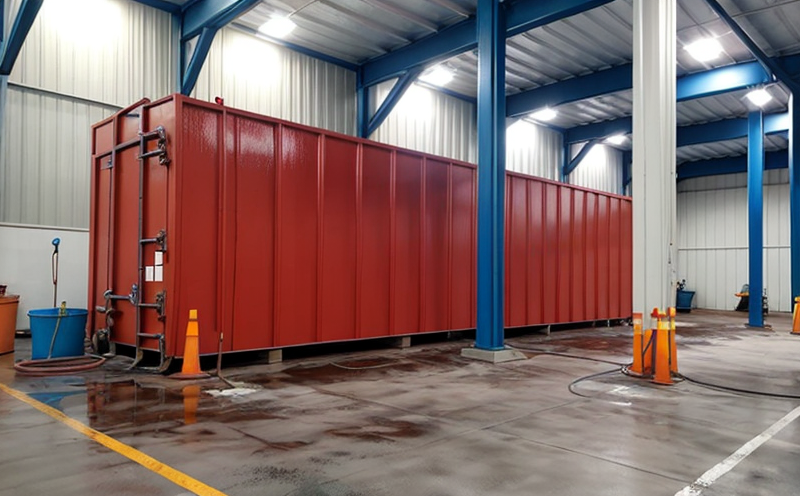ISO 2808 Coating Film Thickness Testing Methods
In industrial manufacturing and processing, coatings play a critical role in protecting materials from environmental degradation. The performance of these coatings is directly tied to their film thickness, which influences properties like durability, adhesion, and resistance to corrosion. ISO 2808 specifies methods for determining the average dry film thickness (DFT) of coating layers on metallic substrates. This standard ensures consistent measurement techniques across various industries, thereby enhancing product reliability.
The testing process involves several key steps: specimen preparation, selection of appropriate measurement tools, application of the test method, and interpretation of results. Specimens must be carefully prepared to ensure accurate readings. This typically includes cleaning the surface, removing any contaminants or loose particles, and ensuring that the coating is not damaged during handling.
The most commonly used instruments for this type of testing include micrometers, magnetic thickness gauges, and eddy current probes. Each method has its own advantages and limitations:
- Micrometer: Suitable for thinner coatings where precision is paramount. However, it requires manual operation and can be time-consuming.
- Magnetic Thickness Gauge: Ideal for ferromagnetic substrates like steel. It provides quick results but may not be suitable for non-ferrous metals or coated plastics.
- Eddy Current Probe: Best suited for non-magnetic substrates. Offers high precision and speed, making it a popular choice in modern manufacturing environments.
The choice of instrument depends on the specific requirements of the project, including material type, coating thickness range, and production efficiency goals. For instance, eddy current probes are often preferred in automated production lines due to their rapid measurement capabilities, while micrometers might be used for quality control checks where accuracy is crucial.
The testing procedure itself involves selecting a representative area on the specimen, ensuring that it meets the criteria outlined in ISO 2808. Multiple measurements are taken at different points across this area to account for variations in coating thickness. These values are then averaged to obtain an accurate representation of the overall DFT.
Accurate measurement is critical not only for compliance with industry standards but also for ensuring product performance meets or exceeds customer expectations. By adhering strictly to ISO 2808, manufacturers can demonstrate their commitment to quality and reliability, which in turn fosters trust among customers and stakeholders.
Why It Matters
The significance of accurate coating film thickness testing cannot be overstated. Properly applied coatings contribute significantly to the longevity and performance of industrial equipment and structures. Inadequate or inconsistent thickness can lead to premature failure, increased maintenance costs, and potential safety hazards.
For instance, in the petrochemical industry, where facilities are exposed to harsh environmental conditions, ensuring that protective coatings meet specified thickness requirements is essential for preventing corrosion-induced failures. Similarly, in aerospace manufacturing, where lightweight yet robust materials are crucial, accurate coating application ensures optimal performance under extreme conditions.
In addition to enhancing product reliability, ISO 2808 compliance also supports regulatory and quality assurance objectives. Many industries operate within strict regulatory frameworks that mandate adherence to specific standards for coating thickness. Compliance with these regulations not only mitigates risks associated with non-compliance but also enhances a company's reputation as a leader in best practices.
Moreover, accurate testing contributes to improved product design and manufacturing processes. By identifying variations in coating application, manufacturers can refine their production techniques, leading to more consistent and high-quality products.
Customer Impact and Satisfaction
Accurate coating film thickness testing has a direct impact on customer satisfaction by ensuring that the products delivered meet or exceed expectations. For industries like automotive manufacturing, where aesthetics and performance are paramount, ensuring that protective coatings adhere to specified thicknesses is critical for maintaining brand reputation and customer loyalty.
In addition to meeting regulatory requirements, adherence to ISO 2808 helps manufacturers build trust with their customers by demonstrating a commitment to quality and reliability. This can translate into higher customer satisfaction levels and increased market share.
For procurement teams, ensuring that suppliers meet the stringent testing criteria outlined in ISO 2808 is essential for maintaining high standards throughout the supply chain. By selecting suppliers who comply with these standards, purchasing departments can ensure consistent quality across all stages of production and delivery.
From an operational perspective, accurate coating film thickness testing supports efficient maintenance schedules. By identifying areas where coatings are thinner than required, manufacturers can schedule targeted touch-ups or re-coating efforts more effectively, reducing overall downtime and maintenance costs.
International Acceptance and Recognition
The ISO 2808 standard is widely accepted across various industries due to its rigorous testing criteria and consistent methodology. Its global recognition underscores the importance of uniformity in coating film thickness measurement, ensuring that results are comparable regardless of location.
This international acceptance is particularly relevant in sectors where cross-border collaboration or supply chains extend beyond national boundaries. For example, in aerospace manufacturing, where components may be sourced from multiple countries, adherence to ISO 2808 ensures that all parts meet the same stringent quality standards, facilitating seamless integration into final products.
Similarly, in construction and infrastructure projects that span international borders, compliance with this standard helps ensure consistency in protective coatings used for structures like bridges, pipelines, and offshore platforms. This uniformity reduces discrepancies in performance expectations between different regions and enhances overall project reliability.
The widespread adoption of ISO 2808 also supports global trade by eliminating barriers related to differing testing methodologies. Manufacturers and suppliers who adhere to this standard can more easily navigate international markets, fostering greater competition and innovation across borders.





